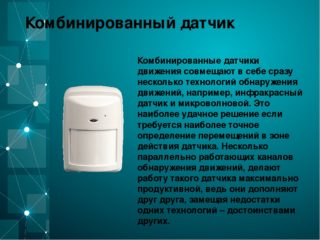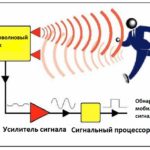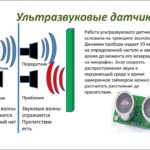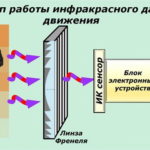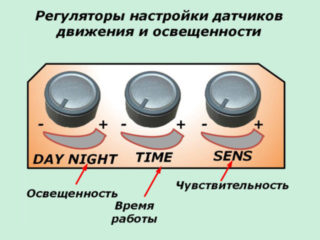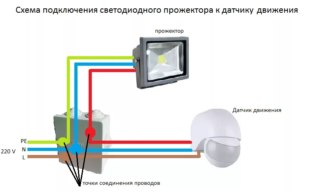The economical use of high-power, volatile luminaires reduces energy consumption and extends the service life of the equipment. The solution to this problem can be the use of a motion sensor - a compact device that connects the lighting device to work when a large moving object appears in the coverage area.
Benefits of using motion sensors
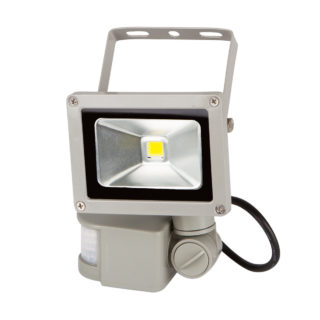
As practical experience shows, a simple motion sensor is effective, performing the following functions:
- saves energy consumption up to 70%;
- serves as a means of scaring away intruders who rely on darkness and lack of observation;
- rationally consumes the working resource of lighting devices.
The cost of purchasing and installing sensors will fully pay off due to the reduction in the cost of electricity bills and maintenance of lighting devices.
Operating principle
The motion sensor is configured in such a way that the entire controlled area is in its "field of vision". When the sensor detects infrared radiation or a wave reflector that differs from other objects in the range, the device is connected to the power supply. If the built-in Fresnel lens detects the movement of the detected object, the electrical circuit is closed and the lighting fixture turns on. After some time, according to the presets, the light turns off, but the sensor continues to monitor the situation in the controlled area.
The motion sensor can be purchased separately or included with the halogen or LED lighting device. It can be connected to the lighting used both during the initial installation and in the process of repairing and improving the network.
Motion sensor classification
- inside the body of the lantern;
- together with a lighting lamp, but in a separate case;
- separate from the lighting device.
An important criterion for choosing a model is the viewing angle and range. It is necessary that the selected device be able to fully control the territory, taking into account its area and layout features.
Depending on the principle of object detection on the site, there are:
- Infrared models - react to changes in infrared radiation in the coverage area. If an object moves, all built-in lenses are directed at it and the plugged-in lighting device is turned on. The sensitivity of such a model depends on the number of lenses - the more there are, the faster the sensor reacts to the appearance of an object. Among the advantages of an IR device are the absence of radiation and precise adjustment of the range of action; among the shortcomings, it is worth noting the likelihood of false alarms and the limitation of operation in conditions of low air temperature.
- The ultrasonic devices detect the change in the frequency of the emitted ultrasonic waves, as a result of which the lighting device is turned on.Among the features of the model are a relatively short range and a negative effect on animals that can capture ultrasound. Here, fine tuning is especially important in order to exclude the device triggering on small objects or on sudden movement. Otherwise, the security function of such a sensor will be minimized.
- Microwave Sensors - Capture their own high-frequency electromagnetic waves reflected from an object in the field of view. Easily recognize movement behind thin glass, stone or wood obstacles. Devices of this type are compact and versatile in use, but they have a relatively high cost.
- Combined models combine several of the listed options at once, using their advantages and mutually overlapping disadvantages. The area of application of such sensors is burglar alarms at important facilities that require particularly careful monitoring.
The choice of motion sensors should be based on the specific features of operation and safety requirements at the facility.
Adjusting the device
- SENS - determines the sensitivity of the device. It can be used to set the size of the object, which will be triggered by the sensor, and the distance to the detected source of motion. Thus, it is possible to reduce the number of false alarms when a small animal enters the field of view, or the object moves outside the controlled area.
- TIME - adjusts the duration of the lighting device after being triggered. It is recommended to set the parameter for at least 2 minutes in order to exclude frequent triggering.
- DAY LIGHT - allows you to select the time to turn on the lighting devices. Among the options offered are night mode or 24/7 tracking.
The type of attachment and the design of the sensors are flexible, due to which it is possible to adjust the position of the device in space in four directions - up or down, right or left. Thus, it will be easy to set up the device to control the allocated area of the territory, empirically achieving its maximum coverage.
Connection diagram to LED spotlight
- The cover is removed from the body.
- The cables from the luminaire are connected to the terminals of the device: a blue-insulated wire to the zero terminal, a red-insulated wire to the phase terminal, the remaining wire to ground.
- The end of the cable is connected to the power supply through an outlet. For safe operation, it is recommended to connect the device through circuit breakers. The protection current of the circuit breaker must be three times the power value of the lighting device.
Detailed instructions on how to properly connect the light sensor to the spotlight are attached to the vast majority of branded devices.
When choosing the direction of the spotlight, it is important to remember the importance of choosing the right sensor position. It should be directed to the location where people are most likely to appear, in accordance with the maximum allowable distance to the object and the nominal viewing angle. It is possible to connect several sensors to one luminaire at once. This solution is optimal in open space, where the appearance of moving objects from any side is possible. In addition, the connection of several sensors is recommended when the viewing angle of the existing sensor is not wide enough. The sensors are connected to the network in parallel, and the lighting device can be switched on when a signal from at least one of the installed sensors arrives.
The installation of the mounted lighting device should take into account the following points:
- Significant height to eliminate the risk of theft or damage to the device.
- Radius of action covering the entire protected area.
- The availability of the device for monitoring the technical condition and periodic maintenance.
According to SNiP, powerful lighting equipment can be mounted in accordance with the following requirements:
- Installation on supports or building facades is allowed.
- A steel cable or a metal bracket is used as an attachment.
If it is necessary to increase the duration of the light on, it is recommended to connect a switch in parallel to the network. Then automatic switching on of the searchlight by the sensor signal will be possible only when the switch position is inoperative.

